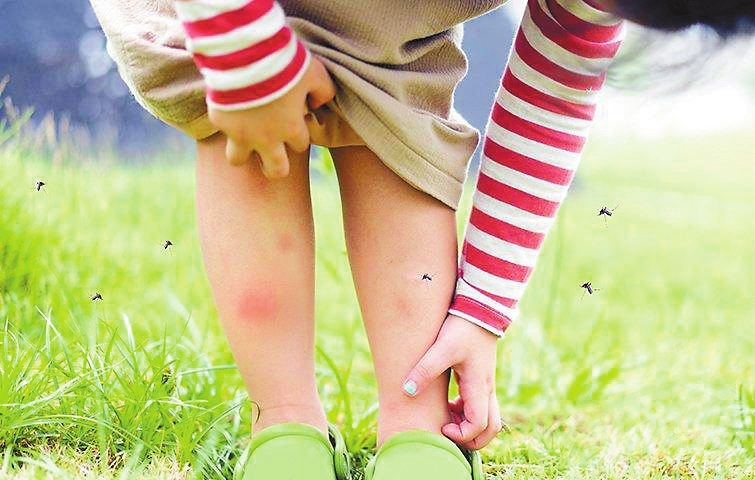
WHEN mosquito season hits, you want to do everything you can to avoid being bitten by the pesky, blood-sucking bugs. But, while there are plenty of factors that go into how attractive you are to mosquitoes, new research has found the colors you’re wearing definitely play a role. That’s the main takeaway from a new study published in the journal Nature Communications. For the study, researchers from the University of Washington tracked the behavior of female Aedes aegypti mosquitoes when they were given different types of visual and scent cues. The researchers put the mosquitoes into small test chambers and exposed them to different things, like a colored dot or a person’s hand. In case you’re not familiar with how mosquitoes find food, they first detect that you’re around by smelling carbon dioxide from your breath. That prompts them to scan for certain colors and visual patterns that could indicate food, the researchers explained. When there was no odor like carbon dioxide in the test chambers, the mosquitoes pretty much ignored the colored dot. But once researchers sprayed carbon dioxide in the chamber, they flew toward dots that were red, orange, black, or cyan. Dots that were green, blue, or purple were ignored. The findings are fascinating, but they also raise a lot of questions about what this means for you once warmer weather rolls around. Here’s what entomologists (aka bug experts) recommend. Why are mosquitoes attracted to the color red? “When light interacts with human skin, regardless of skin pigmentation, it reflects a reddish color,” explains Nancy Troyano, a board-certified entomologist. “Therefore the color red may be one of several cues that mosquitoes use to help them to locate their host.” Mosquitoes also use a heat sensing receptor in their antenna to follow up on this visual cue and locate exposed parts of your body. What about orange, black, and cyan? These colors tend to be darker, which mosquitoes like, entomologist Timothy Best says. “Light colors are perceived as a threat to mosquitoes, which is why many species avoid biting in direct sunlight,” he says. “Mosquitoes are very susceptible to dying by dehydration, therefore light colors may instinctually represent danger and prompt avoidance. In contrast, darker colors may replicate shadows, which are more likely to absorb and retain heat, allowing mosquitoes to use their sophisticated antenna to locate a host.” Should you avoid wearing certain colors during mosquito season? Not necessarily. “Remember that mosquito attraction to people is a combination of several factors, from chemical cues including odors from sweat and carbon dioxide, as well as heat, and visual cues such as color,” Troyano says. Basically, there’s more to a mosquito’s attraction to you than just what you’re wearing. Still, if you have the option of wearing lighter or darker clothes when you know you’ll be going into an area with lots of mosquitoes, Best recommends going with the lighter choice. How to prevent mosquito bites While Troyano says that avoiding colors mosquitoes like (again, red, orange, black, and cyan) when you’re going into areas where these bugs are known to lurk may help, there are other things you can do to lower your risk of being bitten by a mosquito. According to the U.S. Centers for Disease Control and Prevention (CDC), those include: • Using insect repellent with ingredients registered with the Environmental Protection Agency, like DEET, picaridin, IR3535, oil of lemon eucalyptus, para-menthane-diol, and 2-undecanone; • Wear long-sleeved shirts and pants; • Treat your clothes with 0.5% permethrin; • Get rid of standing water around your home or empty items that hold water like bird baths, toys, and planters weekly; • Use screens on your windows and doors. (SD-Agencies) | 
